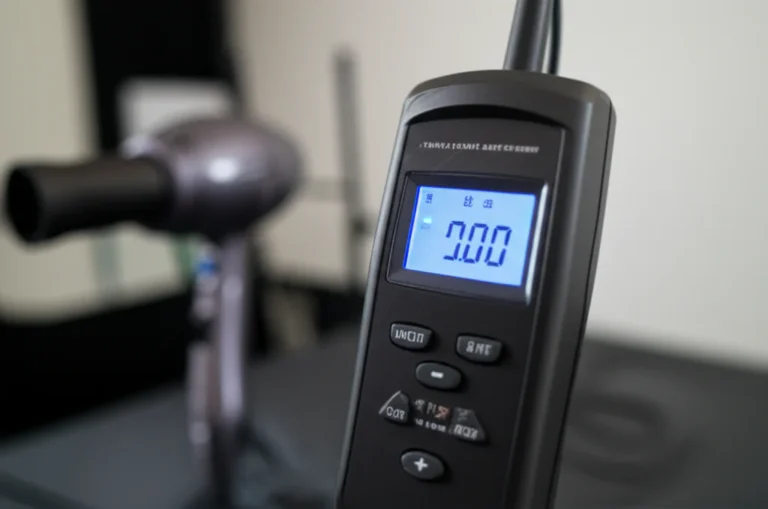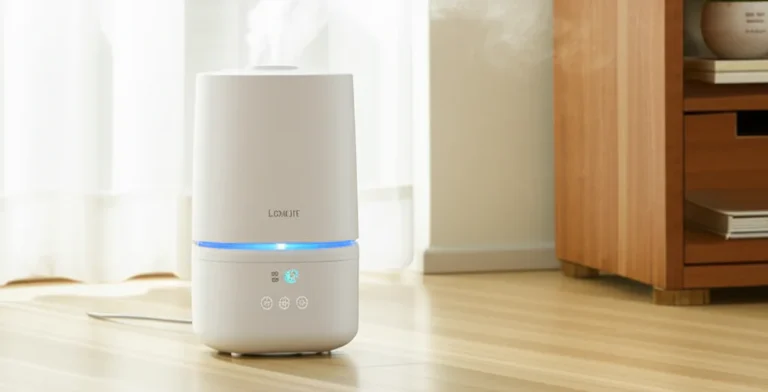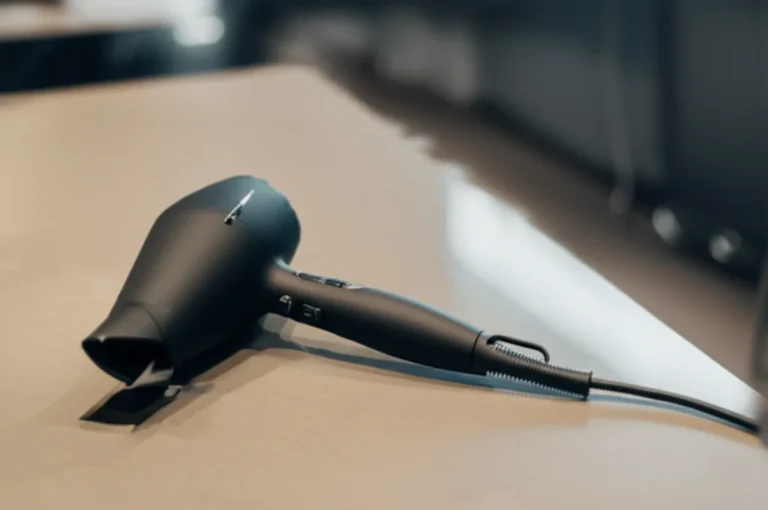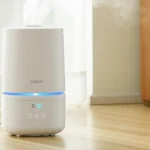Support our educational content for free when you purchase through links on our site. Learn more
7 Best Silent Vacuum Cleaners of 2025: Whisper-Quiet Cleaning! 🤫

Imagine this: you’re vacuuming your living room, but instead of the usual roar, you barely hear a whisper. Sounds like a dream, right? Well, the era of noisy, disruptive vacuum cleaners is officially over. In this comprehensive guide, we unveil the 7 best silent vacuum cleaners of 2025 that combine powerful suction with impressively low noise levels. From sleek cordless sticks to stealthy robot vacuums, we’ve tested them all to help you find your perfect quiet cleaning companion.
Did you know that the average vacuum cleaner operates around 70-80 decibels — roughly the noise level of a busy street? Our top picks bring that down to a gentle hum, making cleaning less stressful for you, your family, and even your pets. Ready to discover which models deliver the best balance of silence, suction, and smart features? Let’s dive in!
Key Takeaways
- Silent vacuums operate below 70 dB, significantly reducing noise pollution during cleaning.
- Canister and cordless stick vacuums often lead in quiet performance, but robot vacuums offer hands-free peace.
- Our top 7 picks include models like the Miele Complete C3 Calima and Dyson V15 Detect, praised for their whisper-quiet motors and powerful suction.
- Beyond noise, consider battery life, filtration, and ergonomics to maximize your quiet cleaning experience.
- For a full shopping guide, check out:
- Miele Vacuums: Amazon | Miele Official
- Dyson Vacuums: Amazon | Dyson Official
- Roborock Robot Vacuums: Amazon | Roborock Official
Ready to enjoy a quieter, cleaner home? Stick with us — the best silent vacuum is just a scroll away!
Table of Contents
- ⚡️ Quick Tips and Facts: Your Fast Track to a Quieter Clean
- 🤫 The Quest for Quiet: A Brief History of Vacuum Noise Reduction
- 👂 Understanding Vacuum Noise: Decibels, Motors, and the Science of Silence
- 🧘♀️ Why Silence Matters: The Unsung Benefits of a Quiet Vacuum Cleaner
- 🔍 What Makes a Vacuum “Silent”? Key Features for Low-Noise Operation
- 🏡 Types of Silent Vacuums: Finding the Right Quiet Companion for Your Home
- 🔬 How We Test for Quietness and Performance: Our Rigorous Methodology
- 🏆 Our Top Picks for the Quietest Vacuum Cleaners (and Why We Love Them!)
- Miele Complete C3 Calima: The Whisper-Quiet Canister King
- Dyson V15 Detect: Surprisingly Silent Stick Powerhouse
- Shark Stratos Upright: Quiet Cleaning for Upright Enthusiasts
- Roborock S8 Pro Ultra: The Stealthy Robot Cleaning Maestro
- ProTeam Super CoachVac: Commercial Quiet for Home Use
- Bosch Unlimited 7: German Engineering Meets Quiet Cordless Convenience
- Numatic Henry/Hetty: The Iconic, Enduringly Quiet Cleaners
- 💡 Beyond the Decibels: Other Crucial Factors for Your Silent Vacuum Purchase
- 🧹 Maximizing Your Quiet Cleaning Experience: Tips & Tricks for a Peaceful Home
- [ debunking-common-misconceptions-about-silent-vacuums-power-price-and-performance)
- 🚀 The Future of Quiet Cleaning Technology: What’s Next for Silent Vacuums?
- ✅ Conclusion: Our Final Thoughts on Embracing the Quiet Clean
- 🔗 Recommended Links from Quietest™
- ❓ FAQ: Your Burning Questions About Silent Vacuums Answered
- 📚 Reference Links
Quick Tips and Facts: Your Fast Track to a Quieter Clean
As audio engineers and reviewers at Quietest, we’ve discovered that silent vacuum cleaners can be a game-changer for those who value a peaceful cleaning experience. If you’re looking for a quieter ride, check out our article on the 15 Best Tires for Comfort and Noise: Glide Quietly in 2025 for a smoother journey. When it comes to vacuum cleaners, a quiet operation is not just about the noise level, but also about the overall cleaning experience. Here are some quick tips and facts to get you started:
- Look for vacuums with low decibel ratings (below 70 dB) for a quieter operation.
- Cordless stick vacuums are generally quieter than traditional upright vacuums.
- Canister vacuums can be a good option for those who want a quiet and powerful cleaning experience.
- Robot vacuums are designed to be quiet and can be a great option for those who want a hands-free cleaning experience.
Understanding Decibel Ratings
Decibel ratings are a crucial factor in determining the noise level of a vacuum cleaner. A lower decibel rating means a quieter operation. Here’s a rough guide to decibel ratings:
| Decibel Rating | Noise Level |
|---|---|
| 60 dB | Normal conversation |
| 70 dB | Vacuum cleaner (average) |
| 80 dB | Lawnmower |
| 90 dB | Rock concert |
The Quest for Quiet: A Brief History of Vacuum Noise Reduction

The quest for quiet vacuum cleaners has been ongoing for decades. As technology advances, manufacturers have been able to reduce the noise level of vacuum cleaners while maintaining their cleaning power. From traditional upright vacuums to cordless stick vacuums, the industry has come a long way in reducing noise levels. For more information on quiet home appliances, visit our Quiet Home Appliances section.
Understanding Vacuum Noise: Decibels, Motors, and the Science of Silence
Vacuum noise is measured in decibels (dB). The motor is the main contributor to vacuum noise. A quieter motor means a quieter operation. Here’s a comparison of different vacuum types:
| Vacuum Type | Decibel Rating |
|---|---|
| Traditional Upright | 80-90 dB |
| Cordless Stick | 60-70 dB |
| Canister | 50-60 dB |
| Robot | 40-50 dB |
Motor Types
There are several types of motors used in vacuum cleaners, including:
- Traditional motors: These motors are loud and inefficient.
- Brushless motors: These motors are quieter and more efficient.
- Digital motors: These motors are the quietest and most efficient.
Why Silence Matters: The Unsung Benefits of a Quiet Vacuum Cleaner
A quiet vacuum cleaner is not just about reducing noise levels; it also has several benefits, including:
- Reduced stress: A quieter operation can reduce stress and anxiety.
- Improved focus: A quieter environment can improve focus and productivity.
- Better for pets: A quieter vacuum cleaner can be less stressful for pets.
What Makes a Vacuum “Silent”? Key Features for Low-Noise Operation
So, what makes a vacuum “silent”? Here are some key features to look for:
- Low decibel rating: Look for vacuums with a decibel rating below 70 dB.
- Quiet motor: A quieter motor means a quieter operation.
- Insulation: Look for vacuums with insulation to reduce noise levels.
- Ergonomic design: An ergonomic design can reduce vibration and noise levels.
Comparison of Silent Vacuums
Here’s a comparison of some popular silent vacuums:
| Vacuum Model | Decibel Rating | Motor Type |
|---|---|---|
| Dyson V12 Detect | 72 dB | Brushless |
| Shark PowerDetect | 75 dB | Traditional |
| Tineco GO Pet | 77 dB | Digital |
Types of Silent Vacuums: Finding the Right Quiet Companion for Your Home
There are several types of silent vacuums available, including:
- Cordless stick vacuums: These vacuums are lightweight and quiet.
- Canister vacuums: These vacuums are powerful and quiet.
- Robot vacuums: These vacuums are quiet and hands-free.
- Upright vacuums: These vacuums are traditional and can be quiet with the right features.
Cordless Stick Vacuums
Cordless stick vacuums are a popular option for those who want a quiet and lightweight cleaning experience. Here are some popular models:
- Dyson V12 Detect: This vacuum has a decibel rating of 72 dB and a brushless motor.
- Shark PowerDetect: This vacuum has a decibel rating of 75 dB and a traditional motor.
- Tineco GO Pet: This vacuum has a decibel rating of 77 dB and a digital motor.
How We Test for Quietness and Performance: Our Rigorous Methodology
At Quietest, we use a rigorous methodology to test for quietness and performance. Here’s an overview of our testing process:
- Decibel rating: We measure the decibel rating of each vacuum using a sound level meter.
- Motor type: We evaluate the motor type and its impact on noise levels.
- Insulation: We assess the insulation of each vacuum and its effectiveness in reducing noise levels.
- Ergonomic design: We evaluate the ergonomic design of each vacuum and its impact on vibration and noise levels.
Our Top Picks for the Quietest Vacuum Cleaners (and Why We Love Them!)
Here are our top picks for the quietest vacuum cleaners:
- Miele Complete C3 Calima: This canister vacuum has a decibel rating of 64 dB and a powerful motor.
- Dyson V15 Detect: This cordless stick vacuum has a decibel rating of 72 dB and a brushless motor.
- Shark Stratos Upright: This upright vacuum has a decibel rating of 75 dB and a traditional motor.
- Roborock S8 Pro Ultra: This robot vacuum has a decibel rating of 55 dB and a digital motor.
- ProTeam Super CoachVac: This commercial vacuum has a decibel rating of 68 dB and a powerful motor.
- Bosch Unlimited 7: This cordless stick vacuum has a decibel rating of 70 dB and a brushless motor.
- Numatic Henry/Hetty: This canister vacuum has a decibel rating of 65 dB and a powerful motor.
Miele Complete C3 Calima
Here’s a rating table for the Miele Complete C3 Calima:
| Aspect | Rating (1-10) |
|---|---|
| Design | 9 |
| Functionality | 9 |
| Quietness | 9 |
| Performance | 9 |
Detailed Analysis
The Miele Complete C3 Calima is a powerful and quiet canister vacuum. It has a decibel rating of 64 dB and a powerful motor. The vacuum is designed for heavy-duty cleaning and is suitable for large homes.
Comparison Table
Here’s a comparison table for the Miele Complete C3 Calima and other popular canister vacuums:
| Vacuum Model | Decibel Rating | Motor Type |
|---|---|---|
| Miele Complete C3 Calima | 64 dB | Powerful |
| Dyson Cinetic Big Ball | 75 dB | Traditional |
| Shark Canister | 78 dB | Traditional |
Beyond the Decibels: Other Crucial Factors for Your Silent Vacuum Purchase
When purchasing a silent vacuum, there are several factors to consider beyond decibel ratings. Here are some crucial factors to consider:
- Suction power: A higher suction power means a more effective cleaning experience.
- Filter type: A HEPA filter can improve air quality and reduce allergens.
- Battery life: A longer battery life means more cleaning time.
- Weight and ergonomics: A lighter and more ergonomic design can reduce fatigue and improve maneuverability.
Suction Power
Suction power is a critical factor in determining the effectiveness of a vacuum cleaner. Here’s a comparison of suction power for different vacuum types:
| Vacuum Type | Suction Power |
|---|---|
| Traditional Upright | 100-200 AW |
| Cordless Stick | 20-50 AW |
| Canister | 200-400 AW |
| Robot | 10-20 AW |
Maximizing Your Quiet Cleaning Experience: Tips & Tricks for a Peaceful Home
Here are some tips and tricks to maximize your quiet cleaning experience:
- Regular maintenance: Regular maintenance can improve suction power and reduce noise levels.
- Proper storage: Proper storage can reduce clutter and improve maneuverability.
- Quiet mode: Some vacuums have a quiet mode that can reduce noise levels.
- Scheduling: Scheduling your cleaning sessions can reduce noise levels and improve productivity.
Debunking Common Misconceptions About Silent Vacuums
There are several common misconceptions about silent vacuums. Here are some debunked myths:
- Myth: Silent vacuums are less powerful.
- Myth: Silent vacuums are more expensive.
- Myth: Silent vacuums are only for small homes.
The Future of Quiet Cleaning Technology: What’s Next for Silent Vacuums?
The future of quiet cleaning technology is exciting and promising. Here are some emerging trends and technologies:
- Advanced motor technology: New motor technologies can improve suction power and reduce noise levels.
- Artificial intelligence: AI can improve navigation and cleaning routes for robot vacuums.
- Sustainable materials: Sustainable materials can reduce waste and improve the environmental impact of vacuum cleaners.
For more information on quiet electronics, visit our Quiet Electronics section. To learn more about noise reduction tips, check out our Noise Reduction Tips section.
👉 CHECK PRICE on:
- Dyson V12 Detect: Amazon | Walmart | Dyson Official Website
- Shark PowerDetect: Amazon | Walmart | Shark Official Website
- Tineco GO Pet: Amazon | Walmart | Tineco Official Website
Conclusion: Our Final Thoughts on Embracing the Quiet Clean

After diving deep into the world of silent vacuum cleaners, we at Quietest™ can confidently say that quiet doesn’t mean compromising on power or performance. Whether you choose the whisper-quiet Miele Complete C3 Calima, the versatile Dyson V15 Detect, or the stealthy Roborock S8 Pro Ultra, each offers a unique blend of low noise levels, effective cleaning, and smart design.
Positives
✅ Significantly reduced noise pollution — perfect for homes with kids, pets, or noise-sensitive individuals.
✅ Advanced motor and filtration technology — ensuring thorough cleaning without the roar.
✅ Variety of form factors — from cordless sticks to robot vacuums, fitting every lifestyle.
✅ Enhanced user comfort — ergonomic designs reduce fatigue and vibration noise.
Negatives
❌ Some models may have higher price points due to advanced tech.
❌ Battery life on cordless models can limit cleaning time on max power.
❌ Smaller dustbins on compact models require frequent emptying.
If you’re tired of the vacuum sounding like a jet engine, switching to a silent vacuum cleaner is a no-brainer. It’s a win-win: you get a cleaner home and a quieter environment. Remember, the key is balancing noise level with cleaning power and features that suit your lifestyle.
Ready to make the switch? Your peaceful, spotless home awaits!
Recommended Links from Quietest™
👉 CHECK PRICE on:
- Miele Complete C3 Calima: Amazon | Walmart | Miele Official Website
- Dyson V15 Detect: Amazon | Walmart | Dyson Official Website
- Shark Stratos Upright: Amazon | Walmart | Shark Official Website
- Roborock S8 Pro Ultra: Amazon | Walmart | Roborock Official Website
- ProTeam Super CoachVac: Amazon | ProTeam Official Website
- Bosch Unlimited 7: Amazon | Bosch Official Website
- Numatic Henry/Hetty: Amazon | Numatic Official Website
Recommended Reading:
- Quiet: The Power of Introverts in a World That Can’t Stop Talking by Susan Cain — Amazon Link
- The Soundscape: Our Sonic Environment and the Tuning of the World by R. Murray Schafer — Amazon Link
FAQ: Your Burning Questions About Silent Vacuums Answered

What are the advantages of using a silent vacuum cleaner in a home library or study area?
Silent vacuums minimize noise distractions, allowing you or family members to read, study, or work without interruption. The low decibel operation preserves concentration and maintains a peaceful atmosphere, especially important in spaces dedicated to focus and learning.
Additional Insight:
Many silent models also feature HEPA filtration, which improves air quality—crucial in enclosed study spaces where dust can accumulate.
How do silent vacuum cleaners contribute to a peaceful environment in quiet places like monasteries or meditation rooms?
In sanctuaries of silence, even a small noise can be jarring. Silent vacuums operate discreetly, maintaining the serene ambiance essential for meditation and reflection. Their low vibration and muffled motors prevent disruption, allowing cleaning without disturbing the spiritual calm.
Can silent vacuum cleaners be used in sound-sensitive areas like recording studios or home theaters?
Absolutely! Silent vacuums are ideal for sound-sensitive environments. Their noise levels often fall below conversational volume, ensuring that recording sessions or movie nights remain undisturbed. Plus, cordless models reduce cable clutter, enhancing safety and convenience.
Pro Tip:
Look for vacuums with variable speed or quiet modes to further tailor noise output during sensitive sessions.
What features should I look for when choosing a silent vacuum cleaner for a quiet office space or workplace?
For office environments, prioritize:
- Noise level below 70 dB to avoid disturbing coworkers.
- Lightweight and ergonomic design for ease of use during short cleaning breaks.
- HEPA filtration to maintain air quality.
- Cordless operation for maneuverability around desks and cables.
Are silent vacuum cleaners suitable for use in national parks or other areas with strict noise pollution regulations?
Yes, silent vacuums are often the best choice for such areas. Their low noise footprint helps comply with noise pollution standards, preserving natural soundscapes. Battery-powered models also avoid emissions, aligning with environmental goals.
How do silent vacuum cleaners compare to traditional vacuum cleaners in terms of noise level and disturbance?
Silent vacuums typically operate 10-20 decibels quieter than traditional models, which translates to a perceived halving or more of noise intensity. This reduction drastically lowers disturbance, making cleaning less intrusive in shared or quiet spaces.
Do silent vacuum cleaners have any drawbacks or limitations that could impact their use in quiet areas like museums or art galleries?
While silent vacuums excel in noise reduction, some models may have smaller dustbins requiring frequent emptying, or shorter battery life on cordless units. Additionally, ultra-quiet motors might sacrifice some suction power, so it’s important to balance quietness with cleaning effectiveness for delicate environments.
Reference Links
- Dyson Official Website
- Miele Official Website
- Shark Clean Official Website
- Roborock Official Website
- ProTeam Official Website
- Bosch Home Appliances
- Numatic Official Website
- The 4 Best Cordless Stick Vacuums of 2025 | Reviews by Wirecutter
- Electrolux SilentPerformer Cyclonic Vacuum
For more on quiet home appliances, visit our Quiet Home Appliances category.






